Point mutation of a plastidic invertase inhibits development of the photosynthetic apparatus and enhances nitrate assimilation in sugar-treated Arabidopsis seedlings
- PMID: 20304912
- PMCID: PMC2865311
- DOI: 10.1074/jbc.M109.055111
Point mutation of a plastidic invertase inhibits development of the photosynthetic apparatus and enhances nitrate assimilation in sugar-treated Arabidopsis seedlings
Abstract
Because the photosynthetic apparatus contains a massive amount of nitrogen in plants, the regulation of its development by sugar signals is important to the maintenance of the carbon-nitrogen balance. In this study we isolated an Arabidopsis mutant (sicy-192) whose cotyledon greening was inhibited by treatments with sugars such as sucrose, glucose, and fructose. In the mutant, the gene encoding plastidic alkaline/neutral invertase (INV-E) was point-mutated at codon 294, with Tyr substituted for Cys (C294Y). Interestingly, the greening of cotyledons in the knock-out INV-E lines was not inhibited by treatment with the sugars. In addition, the knock-out INV-E lines expressing an INV-E:C294Y or INV-E:C294A gene had the same phenotype as sicy-192 mutants, whereas the lines expressing a wild-type INV-E gene had the same phenotype as wild-type plants. A recombinant INV-E:C294Y protein had the same enzymatic activity as a recombinant INV-E protein, suggesting that the Cys-294 residue of INV-E is important for its functions in the chloroplasts. On treatment with sucrose, the expression of photosynthesis-related genes was weaker in seedlings of mutant plants than wild-type seedlings, whereas the activity of nitrate reductase was stronger in the mutant plants than wild-type plants. These findings suggest that Cys-294 of INV-E is associated with the development of the photosynthetic apparatus and the assimilation of nitrogen in Arabidopsis seedlings to control the ratio of sucrose content to hexose content.
Figures
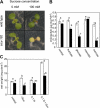
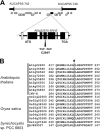
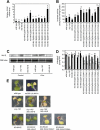
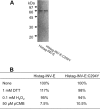
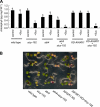
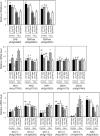
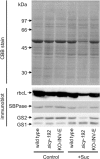

References
-
- Evans J. R., Seemann J. R. (1989) Photosynthesis, pp. 183–205, Alan R. Liss, New York
-
- Hikosaka K., Terashima I. (1996) Funct. Ecol. 10, 335–343
-
- Paul M. J., Pellny T. K. (2003) J. Exp. Bot. 54, 539–547 - PubMed
Publication types
MeSH terms
Substances
LinkOut - more resources
Full Text Sources
Molecular Biology Databases

